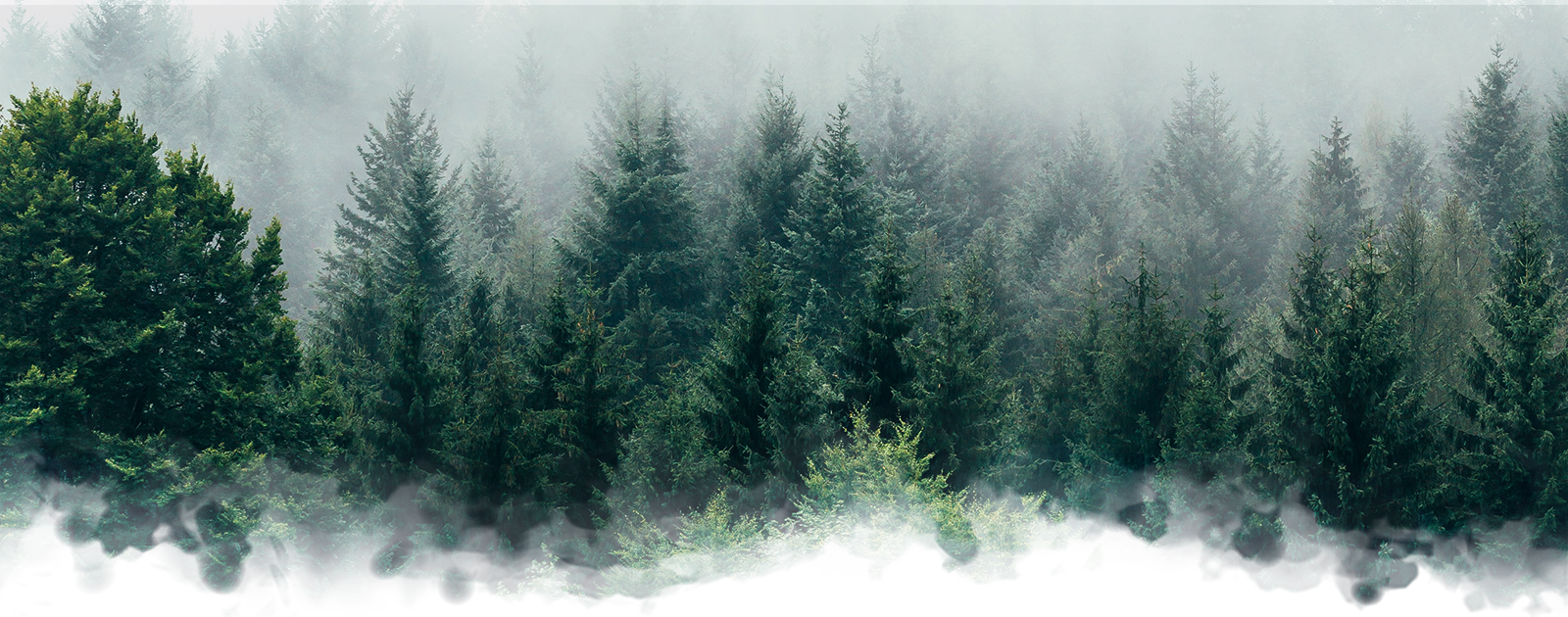Wilderness Exploration
Getting Set Up
Terrain & Environment
Temperature & Weather
Temperature is the one factor in an outdoor environment that must constantly be taken into consideration. It may or may not be raining, the wind may be calm or ferocious, but the air around characters is always of a certain temperature- and if the temperature is very hot or very cold, the atmosphere itself may prove to be a greater hazard to adventurers than any monsters they might encounter. Your first step in determining a region’s baseline weather is to decide upon the region’s climate. Climate is split up into one of three categories: cold, temperate and tropical. These types correspond to the three climate categories used in monster entries in all of the Pathfinder Bestiary volumes (note that a fourth category, extraplanar, is not a factor in determining weather for Material Plane worlds). While the climate sets baselines for temperatures, elevation plays a key factor as well. Elevation can affect the baseline temperature, and it sets the baseline intensity of precipitation in the region. A year has four seasons—spring, summer, fall, and winter— each of which lasts about 3 months. Season plays an important part in dictating a region’s baseline temperature. It also dictates the baseline precipitation frequency in a region before applying adjustments due to climate or elevation. In most regions with cold and temperate climates, precipitation frequency is intermittent during spring and fall, common during the summer, and rare during the winter. In most regions with tropical climates, precipitation frequency is common during spring and fall, intermittent during the summer, and rare during the winter. And on worlds with a tilt in their axis, the seasons are typically reversed between northern and southern hemispheres. While it is the height of summer in the north, the areas south of the equator are in the depths of winter. Once you have established weather baselines for a region and adjust them to match the elevation and season, the next step is to breathe life into the weather by determining the temperature’s variation from the adjusted baseline and the daily precipitation. With this system, you can build out weather patterns and events as far as you want into the future.
Weather is constantly changing, and a significant aspect of that change is the temperature. For the purposes of this system, it’s easiest to assume that the daily temperature remains relatively static during daylight hours and then drops by 2d6+3 degrees during the night. When setting a day’s temperature in a terrain, you can roll on the temperature variations table appropriate to the climate; the result determines how you should alter the adjusted baseline temperature, and also suggests the duration of that change.
If the PCs will be in a region for some time, it’s a good idea to plan out the weather’s variations and events at least a week in advance so if a character tries to use Survival to predict the weather, you’ll have information to work with.
On the other hand, if you know the PCs are going to be in a region for only a few days, planning our a full week of weather isn’t necessary. And of course, you can randomly generate weather on a day-by-day basis if you’re comfortable with the possibility of an unexpected turn complicating the game’s other events.
Armor is any attire that offers some protection in combat by improving the character’s armor class; clothing is any attire that usually does not provide such protection. Clothing is classified in one of four categories, according to the temperature range for which it is best suited.
Very Cold
Very cold clothing provides good protection from the elements at temperatures below 0 degrees. This category includes thick garments such as parkas and trousers made from the furs of animals that are accustomed to very cold weather (bears, wolves, etc.). Extremely important is the quality of insulation the clothing provides; the clothing should fit loosely, so that air can circulate between the body and the garment. This air is warmed by the body, and in turn helps to keep the body warm; in other words, the garment itself doesn’t have to do all the “work” of protecting the body from freezing. The equivalent of very cold clothing can be obtained by wearing two layers of cold clothing or four layers of moderate clothing. As a rule, multiple layers of relatively thin clothing provide more insulation (and thus more warmth) than a single garment equivalent in thickness to the multiple layers. However, in extremely cold temperatures there is no substitute for a thick, bulky garment (presumably worn over at least one layer of normal-temperature clothing) to act as a shield between the character’s body and the subzero temperature. Gloves or mittens, heavy foot coverings, and face coverings are also recommended, and often necessary, to prevent a character’s extremities from being affected by the cold even if the greater portion of his body is protected. Very cold clothing has en encumbrance value equivalent to that of plate mail (bulky, 450 gp), and an outfit of such clothing will cost about 15 gp.
cold
Cold clothing offers adequate protection at temperatures from 0 to 30 degrees. This clothing need not be made of animal furs; often, a bulky and fairly thick garment of woven fabric will suffice. Wool has the best insulating qualities of any fabric that characters are likely to have access to; the very fibers of a wool garment contain “pockets” that add to the fabric’s ability to trap air. Canvas or some other tightly woven fabric is not nearly as good an insulator as wool, because it does not allow air to circulate through and under the garment. However, tightly woven fabrics do help to keep the body’s natural warmth from dissipating too quickly, and they act as good protection against the wind. Some kind of heavy garment, regardless of how it fits or what it is made of, is certainly better than nothing in cold or very cold temperatures. Cold clothing has an encumbrance value equivalent to that of ring mail (fairly bulky, 250 gp), and an outfit of such clothing will cost about 7 SP.
Moderate
Moderate clothing covers a wide range of garments, since the category includes anything that keeps a character comfortable at temperatures from 31 to 75 degrees. At the lower end of this range (up to around 50 degrees), common sense dictates that some kind of light or moderately thick outer garment is necessary (in addition to normal clothing of the sort that would be worn in a heated room). At the upper end of this range, characters can usually get by with nothing more than the shirt (or tunic, or robe) on their back - except during rest stops and sleep periods, when a blanket or some similar extra protection may be needed to keep the body from being uncomfortably chilled. Moderate clothing may have no encumbrance value at all (if the Dungeon Master considers it to be the same as a character’s normal attire), or may be considered equivalent to leather armor (non-bulky, 150 gp) if the clothing is relatively heavy. An outfit of moderate clothing will usually cost no more than 3 gp.
hot
Hot clothing keeps a character from becoming overheated when the temperature is higher than 75 degrees. The garments in this category are greatly varied in style and appearance, ranging from the loincloths worn by natives in a humid tropical forest to the full-length robes that entirely cover the bodies of tribesmen in the hot, dry air of the desert. When the humidity is high, the body tends to perspire more than normal, and it is best to expose as much skin as possible (within the bounds of decency) so that perspiration can evaporate and thereby help to keep the body cool. In a climate where the humidity is consistently low - usually also a place where water is scarce - the body does not perspire as readily, so the inhabitants keep themselves covered and are thereby able to retain more moisture. Hot clothing has no encumbrance value, and a minimal cost (perhaps as much as a robe, which is priced at 6 sp).
Natural Encounters
Getting to the Adventuring
Movement & Travel
For the purpose of determining overland movement rate, terrain is classified as either normal, rugged, or very rugged. Large-scale movement considers each 1 of a character’s movement rate as the number of miles that can be traveled by walking at normal speed -faster than a stroll, slower than a trot- for one-half day (see Players Handbook, page 102). This assumes that one-half day is eight hours, and that the character in question is lightly encumbered and moving over rugged terrain. For example, such a character with a movement rate of 12” can travel 12 miles in eight hours, or 1112 miles per hour for any span of time less than eight hours. If a character attempts to move for more than eight hours without a prolonged rest period (at least one hour), he will move at 314 of his normal maximum speed for the next eight hours or any part of that time he spends traveling. Thus, after 16 hours of continual movement, a character with a 12” movement rate will have traveled 21 miles (12 miles in the first eight hours and 9 miles in the second eight hours). If a character attempts to move for more than 16 hours without stopping to eat and rest, he will move at l13 of his normal maximum movement rate. Thus, a lightly encumbered character with a 12” movement rate who is traveling over rugged terrain can cover a total of 25 miles if he travels for 24 hours without stopping to rest. However, not resting may cause him to suffer other penalties; see the section on Fatigue and Exhaustion.
Surfaces change constantly, and the change in surface angle and type drastically impacts travel speed- and sometimes even danger.
Normal Surface
Normal surfaces have a relative abundance of handholds and footholds, but they are not so closely spaced as on rough surfaces, so that the character must plan his route more deliberately (and thus, move more slowly) when traversing such a surface. Smooth surfaces are not completely devoid of handholds and footholds, but such features are few and often far between. A climber must plan his route very carefully, and sometimes is forced to backtrack and take a different route if his original path leads to a “dead end” where no more usable handholds and footholds are in sight.
Rough Surface
Rough surfaces are those that are strewn with convenient deviations in the surface (protuberances, cracks, etc.) so that it is virtually impossible not to find a handhold or a foothold whenever a character attempts to move along the surface.
Gentle Slope
Gentle slopes have a tilt of at least 15 degrees but not more than 30 degrees. In the least extreme case, a gentle slope changes 2 feet in elevation for every 10 feet of horizontal distance measured on a line that cuts through the slope. In the most extreme case, the elevation changes 5 feet for every 10 feet of horizontal distance. (A slope of less than 15 degrees is not a slope at all, for the purpose of these rules, and can be moved across at the same speed as if it were flat terrain.)
Moderate Slope
Moderate slopes range from 31 degrees through 50 degrees. In the most extreme case, the elevation changes 12 feet for every 10 feet of horizontal distance.
Severe Slope
Severe slopes range from 51 degrees to 70 degrees. In the most extreme case, the elevation changes 35 feet for every 10 feet of horizontal distance.
Cliff
Cliff refers to any slope of greater than 70 degrees. A cliff of 90 degrees, of course, is perpendicular to the ground from which it rises. It is possible for a cliff to rise at an angle greater than 90 degrees, in which case it is properly called an overhang, but this sort of cliff is not treated any differently for the purpose of these rules.
Ledges
Ledges, found on cliff faces more often than not, are outcroppings where one layer of rock meets another and the lower layer protrudes farther away from the cliff face than the upper layer does. Most ledges are not more than three or four inches wide, but this is sufficient to offer a handhold or foothold for a character able to climb such a surface. Sometimes a ledge will protrude six inches or a foot away from the cliff face, providing enough width for a character to assume a stable standing position, but extreme protrusions of this sort are rare, and when they do occur there is always a possibility that the ledge itself is unstable and may give way under the full weight of a climber who has perched on it without also supporting himself with one or more other handholds or footholds.
Nonslippery
Nonslippery surfaces are dry and solid and present no great peril to a climber other than the slant of the slope in question. However, some of the handholds and footholds in such a surface may be “false” - rocks or roots that come loose when they are pulled on, for instance. Thus, it is entirely possible for a character to fall on, or from, a nonslippery surface.
Slightly Slippery
Slightly slippery surfaces are moist or are composed of material that gives way easily under any significant weight or pressure- a grassy slope covered with dew or the moisture from a recent rain, or a surface with a thick covering of sand, loose dirt, or gravel.
Very Slippery
Slippery surfaces are thoroughly wet or coated with ice, snow, or some foreign substance (such as moss or lichens) that is either slippery in itself or tends to pull away from the surface when it is pressed against or pulled on.
Land Divisions
Discovery Points
Explorers typically come to a new area to seek out specific resources or locations... Sometimes they know some and only need to find them. But other times the area remains largely unknown until they're stumbled across. In either case, before a location can be discovered, the party must first accumulate enough Discovery Points- an abstract measure of how thoroughly the party has explored a region. As they explore, they'll naturally acrue discovery points through various checks and actions. The more points they acrue, the more locations and areas of discovery they unlock. These points are tied to the territory they're discovered in, however; they cannot be lost (even if the party leaves the area), but not can they be applied to any other region. Inclement weather such as heavy rain, fog and mist, and other natural phenomenon hampers exploration checks by providing disadvantage to each roll- either until the weather clears, or the players gain better ground (depending on the weather).Known vs Unknown
The character spends the day mapping the territory or recording its features in a gazetteer and can attempt one skill check for each day spent documenting. Creating a map requires one or more successful Profession (cartographer) checks, while creating a gazetteer requires one or more successful Linguistics checks (at the GM’s discretion, other skill checks can be used in place of these). The number of checks needed equals the territory’s CR, and the DC equals the territory’s exploration check DC. Once the character has succeeded at the required checks, she has created a detailed map or gazetteer of the region, which grants a +5 circumstance bonus on future exploration checks in that territory (bonuses from multiple maps or gazetteers don’t stack).
The successful completion of a map or gazetteer can generate a monetary reward if the PCs sell their hard work back in civilization. A complete map or gazetteer of a region that has never before been explored can be sold for a number of gold pieces equal to 100 × the territory’s CR; once a map or gazetteer of a region has been sold, further copies of a map or gazetteer of that region (regardless of whether the first item sold was a map or gazetteer) are generally worth only 10% of that value or less, depending on GM’s discretion and supply and demand
Success vs Failure
Unlike a weapon proficiency, the possession of a nonweapon proficiency does not always mean that the character can realize the benefits of having a certain skill. On some occasions, depending upon the particular proficiency or the circumstances surrounding the use of the proficiency, it is necessary for a character to make a successful Proficiency Check in order to be able to use the skill. A Proficiency Check is accomplished in the same way as an Ability Check. The player rolls 1d20, applies modifiers (if any) to the result, and compares that number to the character’s score in the Appropriate Ability for the proficiency being used. If the modified die-roll result is less than or equal to the score of the Appropriate Ability, the Proficiency Check is successful. (In certain circumstances, the Dungeon Master will make a Proficiency Check die roll instead of the player, and he may or may not reveal to the player the result of the attempt. See the description of the direction sense proficiency for an example of this exception; the Dungeon Master may declare other exceptions of this sort when he deems it appropriate.) Any unmodified die roll of 19 or 20 on a Proficiency Check indicates automatic failure, regardless of modifiers that would otherwise bring the result down into the range needed for success. Also, for the purpose of a Proficiency Check, any ability score greater than 18 is treated as a score of 18. This means that a character with an Appropriate Ability score of 18 or greater must always make a successful Proficiency Check without the aid of any beneficial modifiers, and that even a character with an Appropriate Ability score of 18 or greater has at least a 10% chance (2 in 20) of failing any Proficiency Check he attempts.
Improving Proficiencies: When a character becomes eligible to fill an additional non-weapon proficiency slot gained at 3rd level or higher, the player may elect to improve the character’s ability in an existing proficiency instead of acquiring a new skill. If a proficiency slot is used to improve an existing proficiency, the character receives an automatic die-roll modifier of -2 on all subsequent Proficiency Checks (in effect increasing his Appropriate Ability score by 2 for purposes of a Proficiency Check).
If a player desires improvement beyond this first step, additional modifiers of -2 are attached for every additional proficiency slot filled in this fashion. It is possible for a character with improved proficiency in a certain skill to make a successful Proficiency Check with an unmodified die roll of 19. However, no matter how much a proficiency is improved, an unmodified die roll of 20 still represents automatic failure on a Proficiency Check. Example: A character with one step of improvement in a proficiency and an Appropriate Ability score of 17 can succeed on a Proficiency Check with a die roll of 19, since the -2 modifier for improvement would bring the result down to the range needed for success.
Add Proficiency Per Level shows the number of experience levels that must be passed through before the character is entitled to add more proficiencies. First level is included when counting levels; thus, a cleric must advance through 4th level and be ready to begin 5th level before adding new proficiencies, while an illusionist does not become eligible for new skills until he is ready to begin adventuring as a 7th-level character. The cleric gets his next new proficiencies after finishing 8th level, while the illusionist does not gain any new slots unti! he has advanced through 12th level.
A character is not obliged to fill every new proficiency slot immediately upon gaining it, although there is usually no good reason for delaying the choice (especially one involving a nonweapon proficiency slot). However, if the Dungeon Master allows a player to delay a proficiency choice, it is recommended that he not allow the slot to be filled during an adventure. (A character in a lake, about to go down for the third time, should not be able to suddenly obtain proficiency in swimming.)
While You're Out There ...
Food & Water
Fortunately, food is easy to come by in most types of climate and terrain. Virtually any normal animal is edible (although some of them are not particularly tasty, to put it mildly), and most normal plants can be ingested and digested without harm - but poisonous types do exist, and care should always be taken to prevent illness or death from eating greenery that isn’t good for you. In contrast, the availability of drinkable water varies greatly depending upon the terrain and climate. In some places, water can be located only after spending a lot of time and effort - if it can be found at all. In other areas, water is so abundant that characters tend to start thinking of it as a nuisance rather than a necessity. A character should eat at least twice a day - one meal after a night’s rest and before undertaking any strenuous activity, and another meal at the end of a day of work andlor travel. For any character who misses a meal, the DM may see fit to assign a small but appropriate penalty (- 1 “to hit,” +1 modifier on Strength Checks or Constitution Checks) to apply from the time the meal should have been eaten until the next time the character takes nourishment. A character with below-average strength or constitution is especially susceptible to this temporary weakness caused by failing to maintain a consistent intake of food. Of course, it is possible to consume more than the minimum daily requirement of food, either all in one meal or in more than one meal spaced throughout the day. However, overeating does not offer any significant benefits in game terms; a character’s physical condition does not improve, nor can he go for a longer time before eating again, just because he has stuffed himself. It is also possible to conserve food by not always eating the minimum daily requirement. A character can “cheat” by as much as half of the recommended amount (eating only one-half pound of meat or one pound of vegetables or greenery per day) without immediately suffering adverse effects. However, he can only remain on this restricted diet and still perform normal activities for a number of days equal to 1’12 times his tolerance level (rounded down). After that much time has passed, the character will become weakened and will remain in that condition as long as he stays on half rations. All it takes to offset this condition is the consumption of a full ration during any single day, after which the character is back at full strength. A character who does not engage in any significant physical activity (strenuous or otherwise) can subsist on half rations indefinitely.Foraging, Salvaging, & Trophies
At the GM’s discretion, the following additional rules can be applied to foraging.
Encounters while Foraging: If you use wandering monsters in your game, you should consider checking for a random encounter once per foraging expedition.
Exhausting Resources: At the GM’s discretion, a region can eventually be exhausted of supplies viable for foraging. Foraging while Traveling: You can forage while traveling, but doing so doubles the amount of time required to forage and halves your overall distance traveled. If you move through multiple types of terrain, use the least advantageous forage factor and forage DC of the terrains traveled through.
Group Foraging: Characters can always take the aid another action to improve a character’s skill check to forage; when they do so, they need not remain adjacent to the creature they are aiding.
Swift Foraging: A character can attempt to forage more quickly by increasing the required DC by 10; doing so cuts the time taken to forage in half.






















Comments